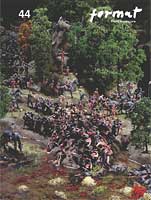Ekstaza pamięci. Z Arturem Żmijewskim rozmawia Rafał Jakubowicz
The Ecstasy of Memory. Conversation with Artur Zmijewski
Author(s): Rafał Jakubowicz, Artur ŻmijewskiSubject(s): Fine Arts / Performing Arts
Published by: Akademia Sztuk Pięknych im. Eugeniusza Gepperta we Wrocławiu
Keywords: NSDAP; war trauma; therapy sessions
Summary/Abstract: In 2000, Zmijewski made a video-movie entitled “Berek”. He photographed naked people playing a children’s game in a basement and in a gas chamber of a former Nazi extermination camp. Zmijewski suggested that people should try to overcome their war trauma and only behave like children in a game. Also, he referred to the ritual the crucifixion organised in the Philippines. He wanted to reveal such emotions as shame and pain. As actors in his movie, he employed people of different age, young and old. Before making the movie, he knew three of the participants. He believes that the “games” resembled therapy sessions, during which people are supposed to behave naturally, in unusual setting. Both laughter and cry can be considered as the elements of therapy.In 2002, Zmijewski made a video-movie entitled “Zeppelintribuene (Nurnberg)”. It is the place, where Hitler used to deliver his public speeches. It was a part of a big urban centre with NSDAP meeting hall, artificial lakes, and sports facilities. After WWII, the centre was demolished. The tribune survived and is still used for concerts and sporting events. When there are no people gathered for a special event, the place looks neglected and dirty. Grass grows in the cracks of staircase, and garbage is thrown everywhere. It isn’t considered as important historic monument.
Journal: Format - Pismo artystyczne
- Issue Year: 44/2004
- Issue No: 01+02
- Page Range: 14-16
- Page Count: 3
- Language: Polish

